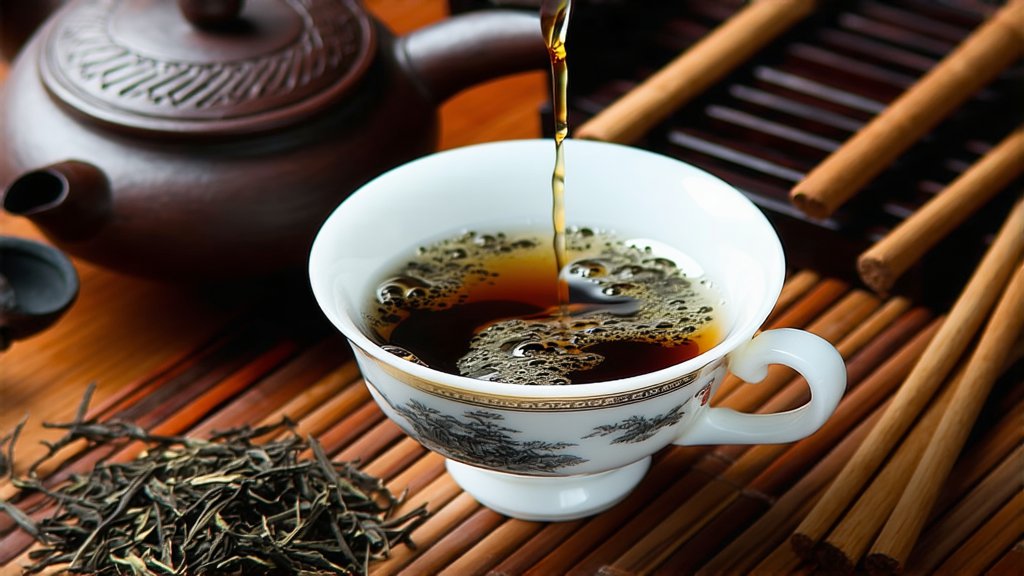
In the vast and diverse landscape of Chinese tea culture, Pu-erh tea stands as a unique and storied category that has captured the fascination of tea enthusiasts around the globe. This dark tea, originating from the Yunnan province in southwestern China, is renowned not only for its rich history but also for its distinctive production process, which involves fermentation and aging, setting it apart from other types of tea.
Historical Background
The roots of Pu-erh tea trace back over a thousand years to the ancient caravan routes that crisscrossed China, connecting remote regions with bustling trade centers. These routes, often referred to as the Tea Horse Road, facilitated the exchange of goods, including tea, between the Tibetan highlands and the Chinese heartland. It is along these routes that Pu-erh tea first gained prominence, becoming a coveted commodity among traders and consumers alike.
Varieties of Pu-erh Tea
Pu-erh tea comes in two primary forms: raw (Sheng) and ripe (Shou). Raw Pu-erh undergoes natural fermentation over time through exposure to air, while ripe Pu-erh is subjected to a controlled fermentation process known as "wet piling," which accelerates the aging process. Each variety offers a distinct flavor profile and aging potential, making them both highly sought after by connoisseurs.
The Art of Pu-erh Production
The journey from leaf to cup is an intricate one for Pu-erh tea. It begins with the careful selection of Camellia sinensis var. assamica leaves, native to the Yunnan region. After harvesting, the leaves undergo a series of steps: wilting, fixation, rolling, drying, and sorting. For raw Pu-erh, the leaves are then pressed into cakes, bricks, or other shapes and left to age naturally. Ripe Pu-erh undergoes an additional step where the leaves are piled together in a humid environment to initiate microbial fermentation before being pressed and aged.
The Aging Process
One of the most intriguing aspects of Pu-erh tea is its aging process. Unlike wine, which reaches peak maturity at a certain point, Pu-erh tea continues to evolve over decades, with some pu'er cakes gaining value and complexity over the years. The transformation is driven by microbial activity and enzymatic reactions, which gradually mellow the tea's flavors and enhance its depth and richness.
Tasting and Appreciating Pu-erh Tea
To truly appreciate Pu-erh tea, one must engage in a sensory exploration that goes beyond mere sipping. The ritual of preparing and tasting Pu-erh involves several steps designed to unlock the full spectrum of its flavors and aromas. Begin by warming the teapot and cups with hot water to ensure optimal brewing conditions. Next, add a generous amount of tea leaves to the pot, allowing for multiple infusions. The initial rinse, or "washing" of the leaves, serves to awaken the tea and remove any residual dust or impurities. Subsequent infusions reveal the evolving character of the tea, with each brew offering new dimensions of flavor.
When tasting, pay attention to the tea's color, clarity, aroma, taste, and mouthfeel. A well-aged Pu-erh will exhibit a deep, reddish-brown hue and a complex bouquet that may include notes of earth, wood, dried fruits, and even subtle floral undertones. On the palate, expect a harmonious balance of sweetness, bitterness, and astringency, with a long, lingering finish that invites contemplation.
Cultural Significance and Modern Appeal
Beyond its sensory pleasures, Pu-erh tea holds a special place in Chinese culture as a symbol of tradition, hospitality, and health. It is often served during formal gatherings and celebrations, embodying the spirit of camaraderie and shared experience. In recent years, as interest in wellness and mindfulness has grown globally, Pu-erh tea has garnered attention for its reputed health benefits, including aiding digestion, boosting metabolism, and promoting cardiovascular health.
In conclusion, Pu-erh tea represents more than just a beverage; it embodies a rich tapestry of history, craftsmanship, and cultural heritage. Whether you are a seasoned tea drinker or a curious newcomer, exploring the world of Pu-erh offers a rewarding journey into the depths of Chinese tea culture and beyond.